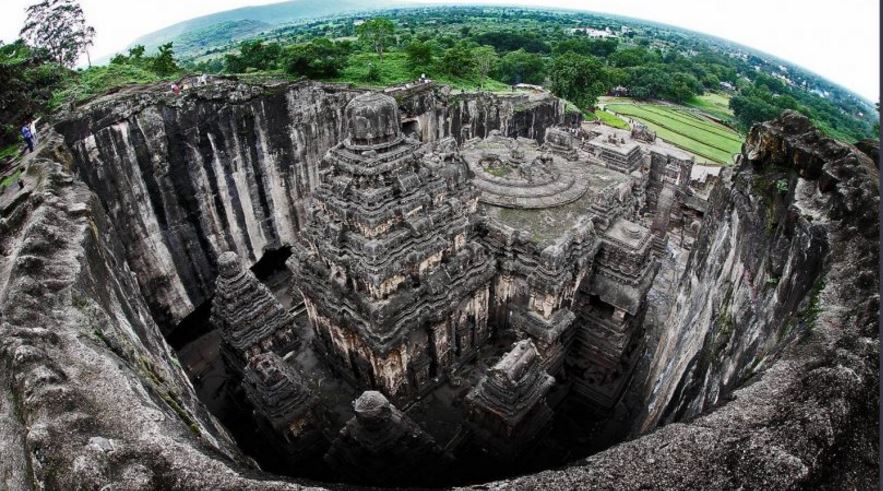
Spiritual
Spiritual Voyages
Life, when stationary, loses its meaning. Without change or progress, it is devoid of purpose and unfruitful. To truly live, one must grow. To achieve one’s purpose, one often finds oneself on the roadway to the divine, following the footsteps of the supreme being. This holy path consists of reflection, purification, and inner peace. Pilgrimages are often seen as an opportunity to cleanse the soul and attain inner tranquillity.
For numerous faiths, pilgrimages represent the path toward personal development and advancement. As stated by the Oxford Reference, “a pilgrimage is characterized as a journey undertaken to a holy site, as an expression of religious dedication.”
Numerous faiths regard certain locations with profound respect, as these holy places act as important focal points for pilgrimages. Across the globe, followers passionately travel to these sites.
While the exact number of pilgrimage sites worldwide varies across cultures, several key locations are widely recognized, including Bodh Gaya, Lumbini, Via Francigena, Vatican City, the Golden Temple, Ujjain, Ayodhya, Shirdi, Mecca, Palitana, and Sri Pada.
Bodh Gaya, located in Bihar, holds a deeply revered status in Buddhism. It is believed that here, under the expansive canopy of the Bodhi tree, Siddhartha Gautama attained enlightenment, an experience that reshaped his journey and laid the foundation for Buddhist teachings. The Mahabodhi Temple, now a UNESCO World Heritage Site, marks the spot of this transformative event, with the surrounding area dotted with tranquil shrines and peaceful monastic establishments.
Lord Buddha was born in the gardens of Lumbini, in southern Nepal. Lumbini, in southern Nepal, is where Lord Buddha was born. Recognized as one of the holiest sites by UNESCO, archaeologists have pinpointed the exact location of his birth, marked by a Stone at the Maya Devi Temple. This temple, central to the Lumbini pilgrimage, holds great spiritual significance.
Moreover, information from the UNESCO World Heritage Centre informs us that, Via Francigena in Italy, is a long-distance pilgrimage route officially starting from Canterbury in England to Rome passing through France and Switzerland. It was an important route for pilgrims travelling to Rome in the Middle Ages. It had been used for centuries by pilgrims travelling from England to Italy to visit the holy sites of Christianity. Due to route variations, there are different estimates as to how long the route is ranging from 1600 kilometres to 2200 kilometres.
The center of the Roman Catholic Church is Vatican City, the world’s smallest sovereign state. The city has many museums with antiquated artifacts and antiquities, and it is also known for its Renaissance architecture. The world’s largest church, St. Peter’s Basilica, is also located there. In 2023, it welcomed over 6 million people.
Moving on, the spiritual centre of Sikhism, Amritsar is where Sri Harmandir Sahib also known as Sri Darbar Sahib, commonly referred to as the Golden Temple can be found. The Golden Temple is a beautiful symbol of fraternity and equality. The ethereal gurudwara is surrounded by a sacred pool known as the Amrit Sarovar, pool of nectar. One of the most remarkable aspects of the Golden Temple is its langar, which serves around 50,000 to 1,00,000 people on average free of cost irrespective of religion, caste and gender. On an average thousands of tourists and pilgrims visit this holy place and experience true peace.
Ujjain is an ancient city in Madhya Pradesh, with a glorious history, hosting one of the twelve Jyotirlingas at the Shree Mahakaleshwar Temple, which is located by the holy river Shipra. It is the abode to many other temples such as Kal Bhairav temple, Harsiddhi temple (One of the 51 Shakti Peethas), Shree Ganesh Temple, etc. The world’s largest gathering, Simhastha (Kumbh Mela) is also hosted on this holy ground every twelve years on the banks of the river Shipra. Hence, making it one of the major Hindu pilgrimage centres in India.
The birthplace of Lord Ram, Ayodhya, especially Shri Ram Janmabhoomi Temple attracts millions of visitors annually. In 2024, it saw 135.5 million domestic and 3153 international visitors, according to the Times of India data. This holy city is one of the seven most important pilgrimage sites for Hindus and is situated on the banks of the river Saryu. It has also seen the leadership of many great kings such as Prithu, Mandhata, Dashrath, Harishchandra, and Lord Ram, as the capital city of Kosaldesh.
Shirdi a town in Maharashtra is known as the home of Sai Baba a spiritual leader. On average, 25,000 devotees visit Shirdi to pay their respects and have the darshan of Shri Sai Baba. Dwarkamsai, a mosque where Sai Baba lived and Lendi Garden are close by.
Mecca is a city in Saudi Arabia and is considered the holiest city in Islam since it is the birthplace of Muhammad as mentioned in Britannica. Hajj, a religious obligation for Muslims, is the Islamic pilgrimage to Mecca. It is seen as a way to connect with God, seek forgiveness and fulfil religious obligations and duties.
Additionally, Palitana is a city in Gujarat and a major pilgrimage spot for Jains. It is also known as the “City of Temples” due to the vast number of temples and holy places present there. No one is allowed to stay overnight in this city since it was built as an abode for the divine. All Jains believe that it is necessary to visit this city at least once in their lifetimes to attain nirvana.
Sri Pada is a heavenly mountain in Sri Lanka greatly respected by Hindus, Buddhists, Christians, and Muslims Each tradition attributes the footprint at its summit to a different figure, Lord Shiva, the Buddha, St. Thomas, or Adam, making it a unique symbol of interfaith reverence.
While each pilgrimage site holds deep religious and cultural significance, the act of pilgrimage itself demands more than just physical travel. To embark on a pilgrimage is to undertake a spiritual journey, one that requires preparation, mindfulness, and respect.
Before one decides to embark on a pilgrimage, one needs to consider the purpose, destination and the local customs of the holy site. One should research their destination, plan their route, pack appropriately, and carry essential medications and travel documents among other things.
Thus, to conclude, a pilgrimage is not only the journey to a sacred site but the experience of self-discovery, reflection and spiritual growth. Travelling around the world pilgrims connect with the divine and one’s on purpose. Whether one walks the ancient paths of Bodh Gaya or visits the heavenly Golden Temple, the pilgrimage enables one to embrace their true identity and faith.
By: Vrindaa Sharma
Write and Win: Participate in Creative writing Contest & International Essay Contest and win fabulous prizes.


